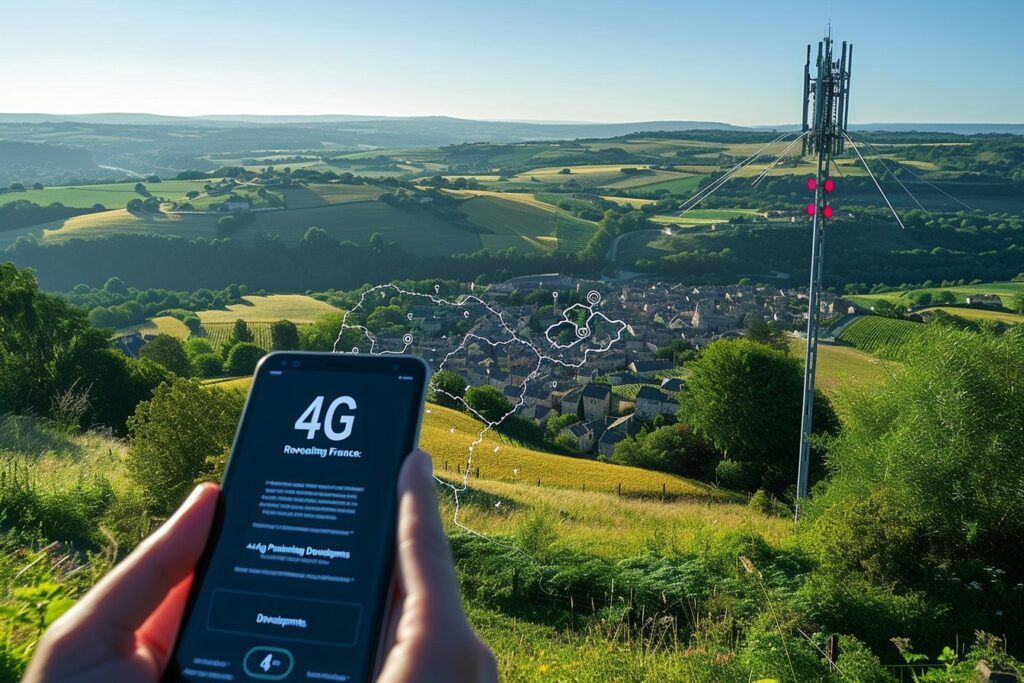A Drastic Improvement in High-Speed 4G Mobile Coverage Over the Past Five Years
The French Telecommunications Regulator, Arcep, recently released a report highlighting significant progress made in the deployment of high-speed 4G mobile coverage across the country. According to the findings, around 99% of the population had access to 4G coverage by the end of 2022. This represents a substantial improvement over the past five years, as the percentage of French territory without 4G access has decreased more than fivefold during this time frame.
- In just five years, France has advanced from being ranked 21st to 13th among European Union countries with the best access to 4G coverage.
- The top-ten most covered departments include Paris, Val-de-Marne, Seine-Saint-Denis, Hauts-de-Seine, Seine-et-Marne, Somme, Vendée, Essonne, Pas-de-Calais, and Nord.
Mountain Regions Still Struggling with Limited Coverage
Despite nationwide improvements, certain regions continue to face challenges in achieving widespread 4G coverage. The departments at the bottom of the ranking include Hautes-Alpes, Savoie, Alpes-Maritimes, Hautes-Pyrénées, Ariège, Alpes-de-Haute-Provence, Corse-du-Sud, Pyrénées-Orientales, Pyrénées-Atlantiques, and Haute-Corse. Most of these low-ranking areas are mountainous regions where challenging topography poses difficulties in establishing coverage infrastructure.
Mobile Service Quality Continues to Improve
Arcep’s report not only details improvements in 4G coverage, but also highlights ongoing enhancements to the overall service quality of mobile phone usage. The findings reveal that texting and calling services, as well as internet usage, have all experienced notable developments in performance. Arcep outlines several measures that should contribute to better equipping rural areas, ensuring that no region is left behind in terms of connectivity.
Factors Contributing to Enhanced Mobile Service Quality
To understand the reasons for these leaps in progress, one must consider the various factors that have contributed to enhanced mobile service quality over recent years:
- Government initiatives: In order to encourage mobile operators to expand their networks and offer better services, government bodies have consistently pushed for infrastructure improvements and established regulations aimed at attaining higher market standards.
- Technological advancements: As technology continues to advance, state-of-the-art equipment has facilitated more efficient network rollout and optimization efforts, leading to improved service quality and reduced costs.
- Increased competition: A highly competitive telecommunications market promotes innovation and investment in network expansion from operators who are working to establish a strong customer base.
- User requirements: With increasingly tech-savvy and demanding customers, mobile operators are forced to evolve and provide high-quality connections to cater to this ever-expanding market.
The Future of 4G Coverage in France
Given the major strides made in recent years, how can the French population expect 4G coverage to evolve further? Based on present trends and Arcep’s projected measures, it seems likely that even mountainous regions will soon achieve improved access to high-speed 4G connections. However, full nation-wide coverage will likely remain challenging due to geographical obstacles and varying levels of population density.
Preparing for 5G
Amid the ongoing development efforts surrounding 4G connectivity, France is also preparing for the arrival of 5G networks. The government and mobile operators have started working together on infrastructure planning to ensure a smooth transition to this next-generation technology, which promises even faster connections and improved service quality.
A True Victory for the French Telecommunications Industry
In conclusion, Arcep’s report paints a positive picture of the progress France has made in expanding high-speed 4G mobile coverage over the past five years. These strides are reflected not only in the drastically reduced portion of territory without adequate access but also in the tremendously enhanced service quality experienced by users throughout the country. Despite remaining challenges posed by mountainous regions, Arcep’s proactive measures and insights pave the way for continued improvements and advancements in the coming years.


